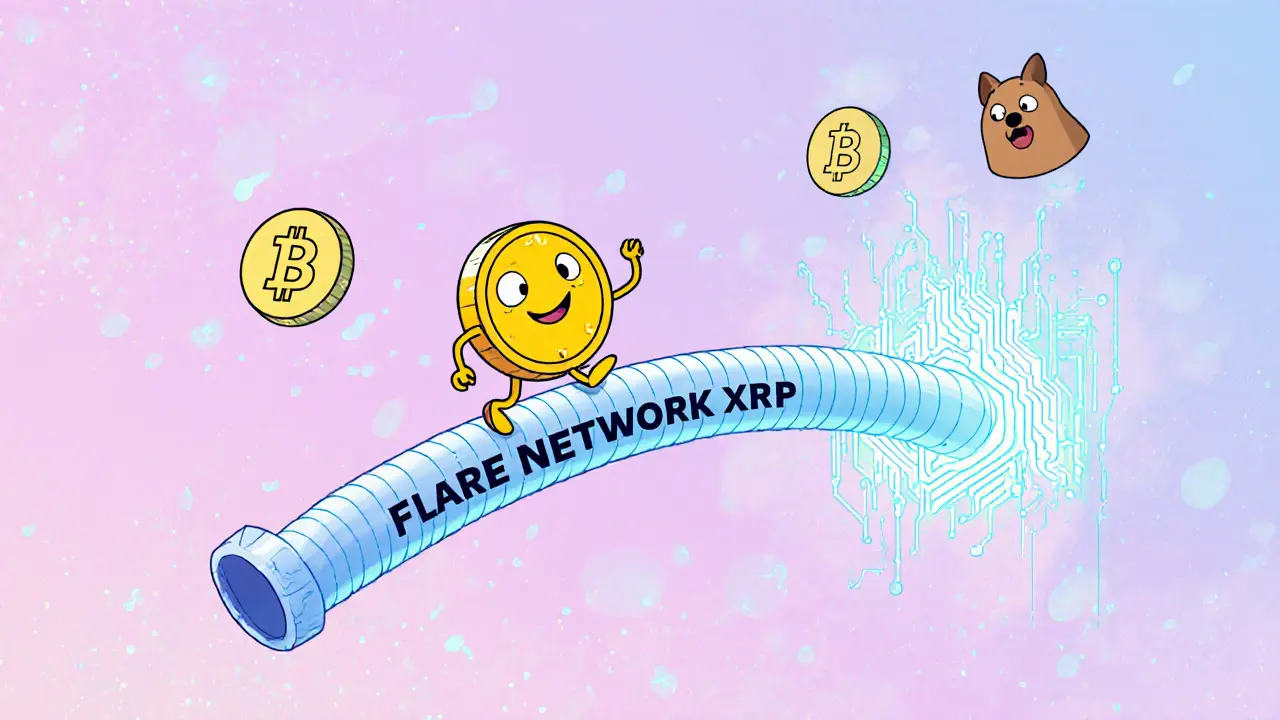FLR Token: What It Is, How It Works, and Why It Matters in Flare Network
When you hear FLR token, the native cryptocurrency of the Flare Network, designed to enable smart contracts on otherwise incompatible blockchains like Bitcoin. Also known as Flare Token, it’s not just another coin—it’s the fuel that makes decentralized applications run on a network built to connect isolated blockchains. Unlike Ethereum or Solana, Flare doesn’t try to compete. It connects. It takes assets like Bitcoin and XRP and lets them do things they were never built for—like lending, staking, or running DeFi protocols—without changing their original chains.
This is where Flare Network, a blockchain built to bring smart contract capabilities to non-EVM chains using a consensus mechanism called State Connector. Also known as Flare, it’s the infrastructure behind FLR’s real-world use comes in. The Flare Network uses something called State Connectors to safely read data from Bitcoin, XRP Ledger, and other blockchains without needing them to change. That data then triggers smart contracts on Flare, allowing users to borrow against their Bitcoin or earn yield on their XRP—all without moving their coins off their original chains. FLR tokens are used to pay for these operations, secure the network through staking, and let holders vote on upgrades. It’s not speculation—it’s infrastructure.
What makes FLR different? Most tokens are either currencies or governance tools. FLR is both—and it’s tied to real asset utility. The Flare Network launched its mainnet in 2022 and has since integrated with over 15 major blockchains. It’s used by developers building DeFi apps that need access to Bitcoin’s liquidity, and by users who want to earn passive income on assets that traditionally sit idle. You won’t find FLR on every exchange, but if you’re serious about cross-chain DeFi, it’s one of the few tokens that actually solves a real problem.
Behind FLR is a team that’s been working on blockchain interoperability for years. The project grew out of the Ripple ecosystem and was designed to fix one of crypto’s biggest flaws: isolation. Bitcoin can’t run smart contracts. XRP can’t easily interact with Ethereum. FLR and the Flare Network bridge those gaps. And while many projects promise interoperability, few deliver it without compromising security or decentralization. Flare does.
What you’ll find in the posts below isn’t just hype or price charts. It’s real analysis—on how FLR fits into the broader crypto landscape, how it compares to other bridging solutions, and what users actually gain by holding or using it. You’ll see breakdowns of its staking mechanics, its role in DeFi protocols, and why some exchanges list it while others avoid it. No fluff. No guesswork. Just what matters if you’re trying to understand where FLR stands today—and where it might be headed.
26 Aug
2025
Flare (FLR) is a blockchain that brings smart contracts to coins like XRP and Dogecoin. Learn how it works, what FLR is used for, its market status, and why Bitcoin integration in 2025 could change everything.
